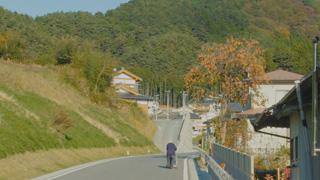Songs Still Sung: Voices from the Tsunami Shores
(Tohoku onba no uta: Tsunami no hamabe de) JAPAN / 2020 / Japanese / Color / Digital File / 80 min
JAPAN / 2020 / Japanese / Color / Digital File / 80 min
Director, Photography, Editing: Suzuki Yoi
Appearances: Konno Sumino, Miura Fujiko, Iwabuchi Ayako, Kinno Takako, Saito Yoko, Arai Takako
Producer: Arai Takako
Production Cooperation: Nakamura Sachiko, Konno Owako, Higuchi Yoshizumi
Calligraphy: Enomoto Ryoichi
English subtitles: Kendall Heitzman and Students in the Workshop in Japanese Literary Translation at the University of Iowa
Source: Songs Still Sung Production Committee
Contact: Mi’Te Press www.mi-te-press.net/film/
Poet Arai Takako goes to listen to the words of onba (older Tohoku women) living in Ofunato, Iwate Prefecture. They relate memories of childhood during wartime, and of the three great tsunamis that have ravaged the area. These women, whose lives are intertwined with the sea, recite poems about and tell of the struggles they have seen. Every last word they speak is formidable. Both the recitations of Ishikawa Takuboku’s tanka in the Kesen dialect and the women’s own poems give us an internal sense of their lives and stories, instantly revealing overlapping layers of history and emotion. A polyphony of past and present, poems and stories.
[Director’s Statement] This film began from the book, Tohoku onba yaku Ishikawa Takuboku no uta (Poems of Ishikawa Takuboku in the onba dialect, Miraisha publ). And yet, about two years after I visited Ofunato, in the Tohoku region, for the first time at the invitation of the book’s editor, Arai Takako, the themes of my film shifted. Instead of the onba’s dialect, it was their poetry; instead of poet Ishikawa Takuboku, I focused on the women. It feels like the heart of my film lies in this change of subject, and the time it took to make it.
I never intended to make an “earthquake” film. Quite frankly, I did not even intend to make a film. Yet the time I spent documenting the lives of these onba echoes throughout its frames: the ten years since the great 2011 earthquake—no, even from long before—is distilled into these five onba’s words and forms, as if we see their voices on the screen. I tried my best to avoid editing intended to manipulate the viewer’s emotions. I wanted to reflect, rather than film. I realized that I might be able to do that when I found myself seeing the landscape—and the film itself—translated into the onba dialect.
The stories told by these onba, whose voices have long reflected a part of the region, translating their lives into onba dialect, become poetry recitation, and the poems themselves. It’s like the slow movement of the sea, and a small calm bay.
And it is important to keep watching and listening to them. Records always exist here in the present, and I imagine another horizon of archiving to interpret them, not just to pass them on. The main discourse is always interpreted. That is very similar to the onba’s beloved ochakko (tea gatherings). Maybe this is not a film after all, but an ochakko. I would very much like you to join this bilingual gathering on the shore, where both speakers and viewers are translating/interpreting each other without realizing it. I place the poetic heart of this film in such a place, hoping to find you there too.
 Suzuki Yoi
Suzuki Yoi
Awarded the special jury prize at Pia Film Festival when a student at Tama Art University for Paris Comes When the Flowers Bloom (2000), Suzuki Yoi travelled around the US and Turkey on the Agency for Cultural Affairs’ Program of Overseas Study for Upcoming Artists from 2014 to 2015. In recent years, he has begun to work on the intersection of film with poetry—from where his creativity springs. His recent works include Film ishi migaki film ishi okisari (2012, object + reading) and Kaibutsu-kun (2013, film version of poem). His works have also been exhibited at MOT Annual 2019 Echo after Echo: Summoned Voices, New Shadows. He has collaborated with other artists such as poet Yoshimasu Gozo and painter Ishida Takashi in cross-disciplinary projects, and has developed unique expressions that transform zones and methods.
